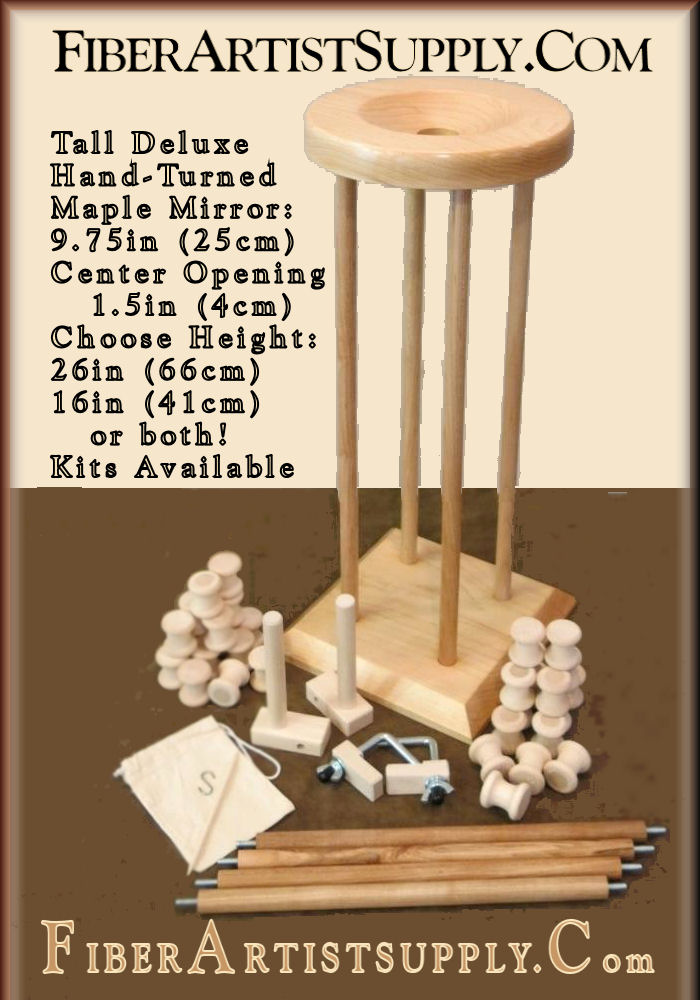 The purpose of this article is to share a starting point of the information necessary to make the best possible investment – time or money – in your choice of braiding equipment.
The purpose of this article is to share a starting point of the information necessary to make the best possible investment – time or money – in your choice of braiding equipment.
Let me make it clear – There is nothing wrong with using a disc or improvised or self made braiding equipment. If that is what is currently in your budget. Many of us have; some including me, still do use both MaruDai and other types braiding stands, just remember flat tops are not Marudai and your results may not be of the quality you hope to achieve. And, I DO recommend you “buy a book” and try with improvised equipment as the first step in your research.
In their beginner books Carey & Owen give ideas for improvised equipment – and see if you enjoy it. the braids will not be perfect or wonderful, that comes with better equipment and practice. Remember: There are many types of braiding equipment not every stand is Japanese in style, or evea a MaruDai and it cannot be said often enough – NOT all braids are Kumihimo.
What makes it a Marudai and not “just” a braiding Stand? Whether you know the Japanese name: Hakomi or the often used “English” words like Scoop or Well or Bowl …
The Hakomi Matters.
Without a Hakomi it is not a Marudai
Why is the Hakomi critical. Perhaps the best answer can be found in two message threads in the FaceBook group: Kumihimo Braiders International in July of 2014 when Michael Hattori was asked, as part of the discussion related to his “announcement:” of his YouTube video and shared with his specific permission:
.. how important is the well in a mirror? I bought one without a well ….
And Michael responded: … we are talking about basics.
The “well” is one of my soapbox topics, and you asked for it! The well is one of THE most important features of a marudai, and in my opinion, any marudai without one should not be used. Its purpose it to provide a “free” space where the threads do not touch the marudai; this allows the threads to fall naturally into place. The depth of the well also causes the threads to angle down toward the point of braiding – another feature which helps the braid to form correctly.
If your mirror is completely flat, the threads move in a straight line to the point of braiding; this means there is friction on the thread almost all the way to the point of braiding, which impedes the formation of the braid. If you are doing just a Yotsu-gumi, you can get away with it, but once you start working with larger numbers of tama, it is absolutely essential.
I’ve said it a million times before, and I’ll say it again: kumihimo has been around for centuries, and the Japanese are known for their ability to refine things to levels unprecedented elsewhere in the world. So, you can bet that every single design aspect of a marudai has been thought out and trialed over hundreds of years and nothing has been left to chance.
It is the folly, unfortunately, of many people who try to make their own kumihimo equipment that this is not taken into consideration, and essential things such as the well are left out.
My advice is to either get a marudai with the well, or find someone who can put one on the marudai you have, paying very close attention to the width, depth and curvature of it.
Sorry for the novel, but you did hit on one of my biggest pet peeves about homemade kumihimo equipment! But I hope I’ve helped you to understand the importance of using a properly made marudai.
2014-07-28 in KBI, Michael shared photos and this additional thoughts.
For … anyone else interested in the “why” of the well on a marudai: a picture is worth a thousand words.
Many homemade marudai are missing this essential feature. These photos show the downward angle and the all-important free space created by the well, both of which allow the braid to “breathe” and form naturally at the point of braiding. The problem with a completely flat mirror is that the threads are then subjected to friction almost all the way to the point of braiding, which can impede the correct formation of the braid; the more tama you are using, the more important this feature becomes.
The marudai has been around for several centuries, and with the Japanese penchant for ultra-refinement, you can bet they haven’t missed anything! So, in my humble opinion, if it ain’t got a well, it ain’t a marudai!
Michael has established the minimum criteria for “what makes it a MaruDai, Well, exactly” – it does not mean other equipment cannot be used, it is just not a MaruDai – Like Michael Hattori I agree if it lacks a Well, then it is not a MaruDai, it is a Braiding Stand – and that tool also has an honorable history, but its roots are not in Japan.
I understand personal budget issues, so like many, it was quite a while before I could afford a Marudai that would “works best for me”. Well worth the wait. That does not mean my braiding stand(s) have not been used, and each as a personal history – only that I always knew my traditional braids would be so much better when I had one.
Meanwhile, for some of the more non-traditional work, beaded braids, wire word and of course – occasional side trips into Victorian Hair work, the flat top continued to be adequate to those tasks.
Thinking about making your own?
Michael Hattori’s measured drawing can be downloaded from my Kumihimo Links Page
added 2015-Jan-09: Not sure if it is mentioned in the Measured Drawing PDF – there are different schools of thought on the height – as was recommended to me (and reinforced by learning the reality the hard way) the top of your mirror should be about the same when you arms are at straight down your side from shoulder to elbow and your forearm is at a 90-95 degree angle to your body. With good back support, this enables me to braid for longer periods
Want to chat about this and related Jewelry & Accessory Making? Join us on FaceBook at: Braids Beaded Kumihimo & More with many thanks to Makiko Tada, Jacquie Carey, Michael Hattori, Carol Miller Franklin, Maryse Levinson, Shirley Berlin, Tim Hale (FiberArtistSupply, Carol Haushalter (Carolyn910), Janis Saunders (BraidersHand). Anita Clark and dozens of others for their permission to include their thoughts and illustrations. Not to mention their decades of patient willingness to answer all my questions about the details and delights of Kumihimo and all braiding techniques.
originally published (and still shared) via ItsAllJustString.COM – Kumihimo and Braiding
Marudai’s I have used and happily recommend: *click for larger image in a new window”
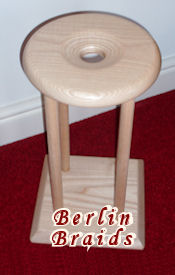 Berlin Braids |
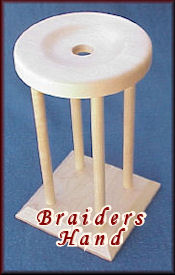 BraidersHand |
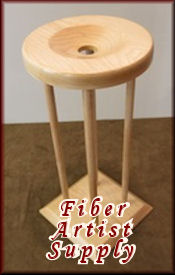 FiberArtistSupply |
These books will be valuable to you even if you decide to stick with the Disc. There are many “details” of braiding that will better enable you to take the step from Disc to Dai

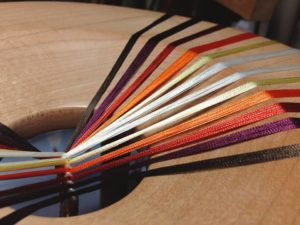
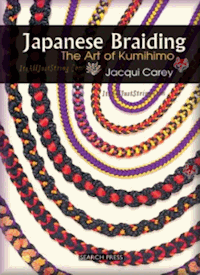
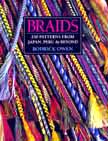
Wow, thank you so much for all the information. I’m going to be buying my first Marudai and this came along at just the right time…
Thanks again, I’ll keep in touch and let you know how I’m doing…
Hugs, Suanough
Do you happen to have a copy of that PDF of the marudai measurements? I’m trying to design my own to 3D print and every link I’ve found pointing to that PDF has been dead.
I just tested the links in my blog post – it worked.